Beth Kanell's Blog, page 27
December 3, 2011
Secret Rooms and Chimneys
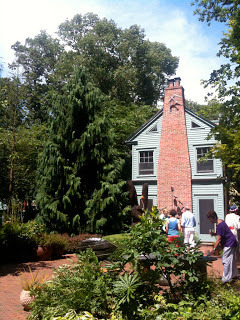 photo courtesy of timmurtaghThe discussion that Jane Lindholm hosted on Vermont Public Radio last month, with historian and professor Ray Zirblis and me, covered a lot of aspects of Vermont's Underground Railroad and some of the passions and confusions around whether and where people may have hidden during the years before the Civil War, in Vermont. (Short summary: Mostly, they didn't need to -- because Vermont stood for personal liberty.) One point made a couple of times is that Vermont contractors often know about hiding places in old houses, because they find them during reconstruction and repairs. Here's a great comment from contractor and designer Sam Clark, of Sam Clark Design:
photo courtesy of timmurtaghThe discussion that Jane Lindholm hosted on Vermont Public Radio last month, with historian and professor Ray Zirblis and me, covered a lot of aspects of Vermont's Underground Railroad and some of the passions and confusions around whether and where people may have hidden during the years before the Civil War, in Vermont. (Short summary: Mostly, they didn't need to -- because Vermont stood for personal liberty.) One point made a couple of times is that Vermont contractors often know about hiding places in old houses, because they find them during reconstruction and repairs. Here's a great comment from contractor and designer Sam Clark, of Sam Clark Design:I have one bit of information on secret rooms around chimneys.Thanks, Sam, for this information!
A lot of old farmhouses had those huge central chimneys, which could easily be 8x8 feet. But they became obsolete with the invention of modern wood stoves in the 19th c, or even gas or oil heat. So, two ideas: the framers had a certain way of framing houses, which allowed for these big chimneys, which they didn't vary when technology changed. Also, sometimes these old chimneys were torn down, and rebuilt as simple brick flues, without changing the walls around them much. We're working on a house in Maine where you can see the remnants of the big chimney, but there is a secret room around the "modern" 16x24 chimney.
Published on December 03, 2011 14:37
Focusing on "Real History," with Good Stories
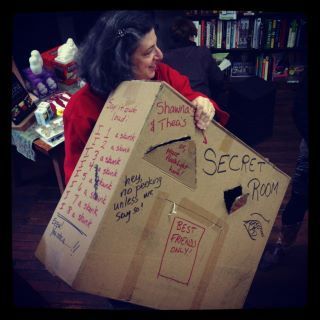 At Bear Pond Books, MontpelierOne of the author/librarian discussion lists that I read daily has recently focused on well-tested historical fiction: that is, the kind where the history involved is "true." I wish the word had been "honest" instead, because history -- unlike the impression many of us get in elementary school -- doesn't ever come in just one "right" version. It comes with many points of view, many experiences.
At Bear Pond Books, MontpelierOne of the author/librarian discussion lists that I read daily has recently focused on well-tested historical fiction: that is, the kind where the history involved is "true." I wish the word had been "honest" instead, because history -- unlike the impression many of us get in elementary school -- doesn't ever come in just one "right" version. It comes with many points of view, many experiences.Just as an example, consider the building of the great railroads that crossed the United States in the 1800s, including the Canadian Pacific Railway. I've been doing some research the CPR lately, because a student in a nearby town just pulled together nearly a hundred letters exchanged by her family members in the 1870s, and two of the letter authors worked on the railroad -- one on its construction, the other (it appears) as a low-level manager for a bit. And in one of those "coincidences" that happen a lot to writers, my husband and I enjoyed dinner last night with another couple, who brought up a place I'd never before heard of: Revelstoke, British Columbia. Our friend is going there to ski, and mentioned that the Canada government is promoting the little city as a destination for tourists and athletes. It's halfway between Vancouver (which is on the west coast of Canada) and Calgary, Alberta (another major Canadian city). And within half an hour of starting to explore the city's history, I realized it's had a constant relationship with the CPR. Now that it's a "destination" for play as well as work, the connection with the railroad is more important again!
But what is the "history" of the CPR -- and of Revelstoke? Is it the experience of railroad workers, many of them immigrants laboring for less money than appropriate, dying of overwork and disease and homesickness? Is it the exhilaration of explorers and entrepreneurs, of investors -- back then, and now -- eager to see commerce develop from their efforts? Is it the flushed happiness of a skier, exploring a massive mountain cloaked with shimmering snow? And where are the echoes of people who knew the landscapes crossed by the railroad, long before metals were worked in North America?
Good historical fiction gives us room to choose a few of those strands and pair them with stories of the hearts and minds of characters. And although we call those characters fictional -- the least "real" of all the strands being woven into the tapestry of a novel -- they too have meaning. I know they reflect me, as well as the people I've come to know and appreciate. When the effort of writing results in truly good stories, they also become a real experience for the reader.
It's been rewarding to travel around northern Vermont and New Hampshire with The Secret Room. I try to spend at least as much time listening as talking, at author events. And I've heard stories of other lives that involve secret rooms, whether their history is known or not. We all have so many questions about our past, and about our homes. Sharing the stories and questions of our lives helps make us rich with spirit, and I believe it gives us better grounding from which to climb.
Published on December 03, 2011 10:43
October 28, 2011
You Could Win a Free Copy of THE SECRET ROOM ... Or Reserve One to Purchase at a Vermont Author Event!
Visit this Minnesota mom's wonderful blog Hanging Off the Wire and try for a free copy of The Secret Room today. Do spend some time reading HayleyK's posts ... she's got a lot of good insight.
And then, to make sure you're going to have enough copies (one for you, one for your mom, one for your best friend at the holidays), please do mark your calendar for one of these upcoming events featuring the book:
* Sunday Nov. 6 at 1 pm at The Flying Pig Bookstore in Shelburne, VT, where kids and young adults come first (but there are great books for their "drivers" too!).
* Monday Nov. 7 at 7 pm at the church in West Barnet, VT, for the meeting of the West Barnet Women's Fellowship.
* Friday Nov. 25 (yes, the day after Thanksgiving, "Black Friday") at 11 am at Bear Pond Books in Montpelier, with an armful of other wonderful Vermont authors.
See you soon!
And then, to make sure you're going to have enough copies (one for you, one for your mom, one for your best friend at the holidays), please do mark your calendar for one of these upcoming events featuring the book:
* Sunday Nov. 6 at 1 pm at The Flying Pig Bookstore in Shelburne, VT, where kids and young adults come first (but there are great books for their "drivers" too!).
* Monday Nov. 7 at 7 pm at the church in West Barnet, VT, for the meeting of the West Barnet Women's Fellowship.
* Friday Nov. 25 (yes, the day after Thanksgiving, "Black Friday") at 11 am at Bear Pond Books in Montpelier, with an armful of other wonderful Vermont authors.
See you soon!
Published on October 28, 2011 08:21
What's Ahead: The Writing Project List
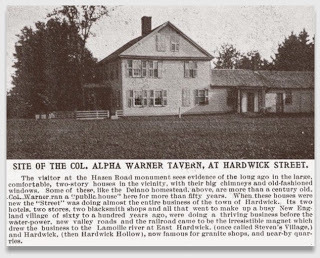
[image error] F.D. Reeve and I completed the first draft of "Opal of the Mountains" last week; I'm working on the second draft now. That's the promised "novel in iambic pentameter" -- or, more to the point, it's a novel all in dialogue. It opens in a vegetable garden, and climbs steadily upward, including up some cliffs. More on this, later.
I've got two photos that I want to share, for their roles in possible novels coming up. The first, nicely labeled from its original newspaper use, is an old "tavern" in Hardwick, Vermont. These town or village meetingplaces were some of the largest houses around, and there are still many on what look like back roads today but were once the centers of life in "hamlets" (small villages) formed from working families living close together. The inn that features in The Secret Room is related to this tavern as a structure, but with more emphasis on overnight rooms for travelers. From the size of the pictured tavern here, I'd guess there were rooms for rent in the Hazen Road Warner Tavern, too.
Because inns and taverns were places for local people to keep up with each other's lives, and also to meet travelers -- either distant relatives, or intriguing strangers -- this tavern is going to appear in one of my stories soon. There are two classic premises to begin an adventure: "A stranger comes to town," and "Someone leaves on a journey." A tavern or inn is the perfect place for both.
The second photo was sent by Harman Clark and shows the Vail Mansion, which stood on what
is now the Lyndon State College campus. Many who stayed there recall it as haunted. No doubt, it will appear in a story of "haunting" that's bubbling up for me to tell.
My list here at the desk also includes revisions next month on my 1850 novel, The Long Shadow; crafting a first draft of a middle-grades book I've called in my mind "the captive fortuneteller"; and a collection of poems. If only I didn't have to make supper and do laundry and finish digging the carrots from the garden, too!
Published on October 28, 2011 08:01
Looking Into Claire Benedict's Heart: Deepening the Story
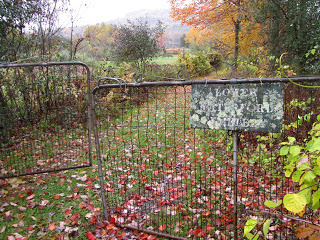 Cold Midnight tells the story of Claire Benedict and Ben Riley, teens in 1921 -- their night-time escapades in the town of St. Johnsbury, Vermont, and the moments when they see evidence that may tie to a murder of a local businessman, as well as to the "firebug" who's tormenting the local fire department with false alarms and worse.
Cold Midnight tells the story of Claire Benedict and Ben Riley, teens in 1921 -- their night-time escapades in the town of St. Johnsbury, Vermont, and the moments when they see evidence that may tie to a murder of a local businessman, as well as to the "firebug" who's tormenting the local fire department with false alarms and worse.I finished the first draft in December of 2010, sent it out to my trusty agent and an insightful editor in January, and received their comments and suggestions in early summer. Since then, I've wrestled with how to change the arc of the book to incorporate these wise notions of what it needs in revision.
Revision? Yes, in my experience, revision is the stage when a "promising" story becomes a really good one. And it requires investigating the heart of the main character of the book, asking questions within the "author heart" about why the person is and does the things in the novel. As the answers become clear, so does the path toward the deeper, better story.
And this week, I've reworked Claire's relationship with her dad -- because underneath all the plot twists and discoveries, that's where the pain of the book resides, and where the real satisfaction can happen, if Claire makes choices that come from both courage and love.
Published on October 28, 2011 07:46
October 19, 2011
Like Peanut Butter and Jelly!
[image error]
Photo courtesy of redjar.I had a great time visiting Northshire Bookstore in Manchester, Vermont, earlier this month; chatting with readers about The Secret Room was fun and interesting, and a highlight of the visit was reconnecting in person with Jeanette Sessions, the store's "young adult" enthusiast, who often posts on Northshire's book blog. Here's the intro Jeanette prepared for the event; she cut it short because she knew almost everyone who came to the event (yay, community bookselling!), and I wanted to share it all. I love the peanut butter and jelly comment! Thanks, Jeanette -- you're terrific.

Hello and welcome to the Northshire Bookstore. My name is Jeanette. I meet Beth Kanell about three years ago when she came to the bookstore for a reading of her first novel, Darkness Under the Water: a thought-provoking and unique story covering some of Vermont's unknown history, set in the 1920s. Kanell opens the eyes of her readers with magical text and a perspective as honest as she is. Here we see Molly, her Abenaki family, and the struggles they face.Now, I have the pleasure of introducing you to her latest work, The Secret Room. We find ourselves in modern-day Vermont. Shawna and Thea are as different as peanut butter and jelly: but go together just as nicely! Shawna is a local farm girl. Thea, a "flatlander" whose family has just purchased a home that used to be an inn. When the two are teamed up for a math homework project to measure Thea's house…the numbers do not add up! The outside numbers say the inside numbers should be bigger! This mystery leads to them finding a secret room in the house's basement. But the fun does not end here! The facts lead everyone to believe that this room could have been part of the Underground Railroad! The girls learn not only about the history of the inn and Vermont, but Shawna learns about her own personal history and what friendship really means.
Before I hand over the stage to our guest (who will not only speak about her novel, but has a few goodies for you as well), I want to thank you for coming and please do not forget to purchase a book and have Ms. Kanell sign it for you after the event. Not only will you experience this alluring and captivating novel yourself, but you will help us bring more great authors to the bookstore. Now please join me in welcoming a great author and my friend, Beth Kanell.
Published on October 19, 2011 15:01
October 12, 2011
How to Get Writing -- and Keep It Going
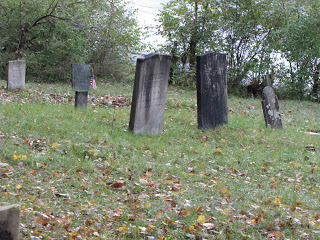 I'm headed to a local high school today, to listen to readers of THE SECRET ROOM and to coach them -- teens and adults alike -- on how to get and keep a novel rolling. Here's the outline I'm working from:
I'm headed to a local high school today, to listen to readers of THE SECRET ROOM and to coach them -- teens and adults alike -- on how to get and keep a novel rolling. Here's the outline I'm working from:The Writer's Workshop: How The Secret Room Was Written, and How to Start Exploring Your Own Stories
Beth's Braid Method:A section of history that is changing in a controversial way (justice!!).A situation in Vermont that won't resolve easily.A character who starts "speaking" to me.
Other Braids:A wish. 1. A stranger. 1. A journey ahead.A problem. 2. A discovery. 2. A values collision.A friendship. 3. A life change. 3. A sacrifice worth making.
A Toolbox(a) Situations, places, newspaper articles, letters, poems, special words.(b) Sensory triggers: candles, leaves, flowers, feathers, music, bells, tea, chocolate.(c) Memory board: children, babies, pets, trees, roads, houses, postcards.
A Place to Dream and DrawNotebooks: Adding color, size, organization.Wall boards: brown paper, "white boards," doors.Computers: Files of images, words, outlines, messages. Sort and label!!
Keeping on TrackGoals and timelines.Friends and mentors.Rewards versus incentives.Feeding the Curiosity Cat.
Writer's Block, Revision, and Other Flashlight MomentsPicture the reader: What change or conviction or amazement or horror do you picture in your reader? How can you evoke this, more effectively? Often this kind of revision calls for structure changes: pacing through paragraph and sentence length, word choices, point of view. Try rewriting one paragraph in a different voice – "I" instead of "she" or vice versa. Past instead of present, or vice versa. Short sentences or long one … experiment, make smoke.
Cut to the heart of things: Ask, "What is this story ABOUT? How can it be more intensely about that?" This might call for "poetic revision" or for cutting away "the trimmings." Circle the best parts, mark the compelling areas. Try using only the best parts.
"Hansel and Gretel": What matters in this story? Why is each part in place? What parts are missing?
Have fun!! Read aloud. Picture a Haiku. Look for "growth buds." Form a tree. Draw a landscape. Add color to your page. Change the music in your room or your mind. Visualize a flame. Fear and faith. Make a distance between "you" and your character. Close the distance between you and your character. Be a rude child – point fingers, ask why.
Published on October 12, 2011 10:22
September 25, 2011
Friendship Bracelet: A Poem
 Photo by eef-ink (thank you!)This is the season of the
Photo by eef-ink (thank you!)This is the season of thefriendship bracelet.
You've seen them: twisted threads
knotted by a girl at summer camp.
Or the plain red ones that mean
something meditative. Mine is
crafted from four strands: black, white,
purple, gold. And made by Caroline.
I like to watch her working, her dark eyes sparkling,
her fingers deft -- who taught her this?
A friend in the back seat on the long road
to skating camp? A girl sharing her snack
behind the horse barn? She measured
my wrist, insisted that I choose my own colors.
An hour later, she asked for my arm.
She tied a careful double knot. "If it wears out,"
she told me, "I can make you another."
(Beth Kanell, 2011)
[How to make a friendship bracelet: one link here.]
Published on September 25, 2011 07:03
September 23, 2011
A Book and Its Cover
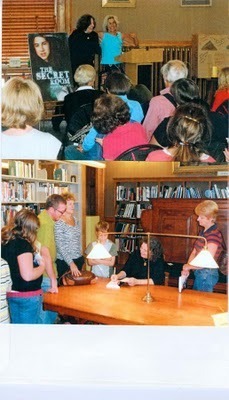
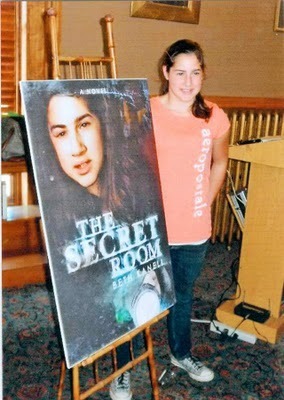 Here are some photos taken by Harman Clark at the wonderful book launch party that greeted The Secret Room on Sept. 9 at the St. Johnsbury Athenaeum. I especially like the one that shows local student Maggie, with the cover for which she was photographed in the spooky basement of the publisher's house in St. Johnsbury, Vermont, months ago. (On the back of the book, Maggie is joined by her friend Katherine.)
Here are some photos taken by Harman Clark at the wonderful book launch party that greeted The Secret Room on Sept. 9 at the St. Johnsbury Athenaeum. I especially like the one that shows local student Maggie, with the cover for which she was photographed in the spooky basement of the publisher's house in St. Johnsbury, Vermont, months ago. (On the back of the book, Maggie is joined by her friend Katherine.)Making the party especially exciting were 35 middle school students from the St. Johnsbury School, invited and chaperoned by librarian Beth Mallon and her team of volunteers. Mrs. Mallon, you rock! Thanks, all of you students and readers whoo hiked to the Athenaeum to join the fun (and solve some codes!).
Published on September 23, 2011 14:09
"Story" and "History"
 2010 photo courtesy of origamidon (thank you!)It's been grand in the past two weeks to see The Secret Room reaching readers, with its lively adventure story of two Vermont eight-graders, Shawna Lee and Thea Warwick, who stumble into the controversial and rapidly changing landscape of Northern New England's Underground Railroad in the midst of a math project for school. The hiding place that they discover, as well as the secrets of their village and the strengths of their friendship, are in your hands. Thanks for the wonderful welcome to the book!
2010 photo courtesy of origamidon (thank you!)It's been grand in the past two weeks to see The Secret Room reaching readers, with its lively adventure story of two Vermont eight-graders, Shawna Lee and Thea Warwick, who stumble into the controversial and rapidly changing landscape of Northern New England's Underground Railroad in the midst of a math project for school. The hiding place that they discover, as well as the secrets of their village and the strengths of their friendship, are in your hands. Thanks for the wonderful welcome to the book!I promised that today I'd mention how to find out whether the "hiding place" in your own home or neighborhood is linked to the Underground Railroad. Here are two directions to try:
1. If you are IN VERMONT, your best resource is Rokeby Museum, which you can visit while the gentle weather lasts. Director Jane Williamson and her knowledgeable staff will welcome you to the evidence that history provides there. If you can't go in person, check out this report from the director, an essay on Rokeby's website.
Also available at Rokeby are copies of "Friends of Freedom." This 99-page spiral-bound report was issued by the State of Vermont in 1996. It's a history detective's treasure, because the investigators involved tracked down the evidence for 174 people and places around the state that thought they had ties to this most exciting history adventure: the effort before the Civil War to make sure that black Americans leaving the slaveholding South could find freedom and safety, whether in other parts of the United States or in Canada. Check the lists in this report to find out whether your location, like Rokeby, is well supported as "really truly" part of the Underground Railroad effort. And brace for the possibility that, like the cave at Hildene (a Lincoln family home in Manchester, Vermont), connections may be more based in oral tradition and wishful thinking, without real evidence.
2. If you live OUTSIDE VERMONT, check this site provided by the Smithsonian Institution, providing good facts and exposing a lot of myths. For instance:
The reality of the Underground Railroad was much less romantic. Escaping enslaved individuals often had no help or guidance from anyone throughout the majority of their journey. While it is a common belief that white Northerners were going into the South and bringing slaves from the farms and plantations into the North, the truth is that most enslaved individuals left on their own. When the enslaved did have assistance, the aid they received varied from being given a place to rest in barns and sheds to being provided with a small amount of food and sent on to the next location. Those seeking freedom would have had to place a good amount of trust in the people who were assisting them, for at any moment their safety could be compromised, leading to recapture.
It is also a common misconception that all people working to assist escaping individuals were white Northerners. The fact is that the majority of the conductors on the Underground Railroad in the South were Black, often still enslaved themselves.
You can also check with the National Parks Service, which answers questions on specific sites and also invites you to share information you might have. Here's the website for help from this group.
More comments and questions? Leave a comment here on the blog. I'll get back to you, time permitting!
Published on September 23, 2011 13:58



